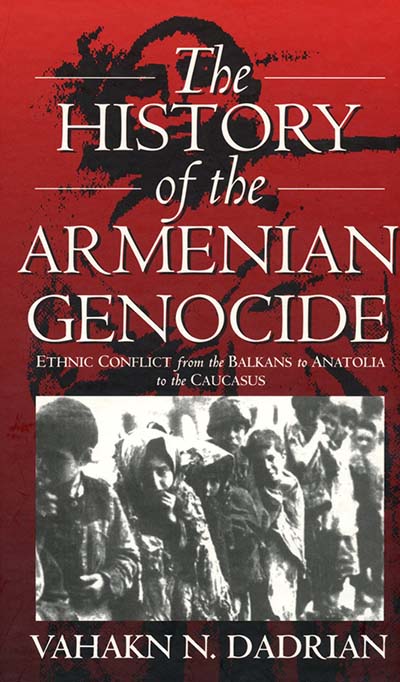
Email Newsletters
Sign up for our email newsletters to get customized updates on new Berghahn publications.
Genocide in the Ottoman Empire
Armenians, Assyrians, and Greeks, 1913-1923
Edited by George N. Shirinian
444 pages, 8 illus., bibliog., index
ISBN 978-1-78533-432-0 $150.00/£115.00 / Hb / Published (February 2017)
eISBN 978-1-78533-433-7 eBook
Reviews
“This is a very timely edited volume that will fill a very significant gap in the study of Greek, Assyrian, Armenian, and Turkish history on the one hand, and, on the other, provide an analysis of the collective violence these non-Muslim minorities had been subjected to in the Ottoman Empire and later on… I heartily recommend this book to scholars interested in the histories of these communities as well as the Ottoman Empire and Turkish Republic; genocide scholars would also benefit from the novel framework of studying the collective violence against Greeks, Armenians, and Assyrians together, from a single comparative vantage point as late Ottoman genocides.” • Slavic Review
“Overall this integrated genocide history is a valuable addition to the growing field of genocide studies, where cases start to mingle and enter the mainstream, stimulating us to ask larger questions in dense descriptions of regions as they erupt in violence, to paraphrase Charles Joyner.” • Genocide Studies International
“This comprehensive volume is the first to broadly examine the genocides of the Armenians, Assyrians, and Greeks in comparative fashion, analyzing the similarities and differences among them and giving crucial context to present-day calls for recognition. It is also one of the rare books which investigates the fate of the Ottoman Christian people during World War I as a whole, as not only Armenians, but Greeks and Assyrians were also targeted by the genocide carried out by the Young Turk's Ottoman Government. In the shadow of World War I, the Young Turk's aim was to exterminate the entire Christian population.” • Assyrian International News Agency News
Description
The final years of the Ottoman Empire were catastrophic ones for its non-Turkish, non-Muslim minorities. From 1913 to 1923, its rulers deported, killed, or otherwise persecuted staggering numbers of citizens in an attempt to preserve “Turkey for the Turks,” setting a modern precedent for how a regime can commit genocide in pursuit of political ends while largely escaping accountability. While this brutal history is most widely known in the case of the Armenian genocide, few appreciate the extent to which the Empire’s Assyrian and Greek subjects suffered and died under similar policies. This comprehensive volume is the first to broadly examine the genocides of the Armenians, Assyrians, and Greeks in comparative fashion, analyzing the similarities and differences among them and giving crucial context to present-day calls for recognition.
George N. Shirinian is Executive Director of the International Institute for Genocide and Human Rights Studies, a division of the Zoryan Institute. His publications include Studies in Comparative Genocide and The Asia Minor Catastrophe and the Ottoman Greek Genocide: Essays on Asia Minor, Pontos, and Eastern Thrace, 1913–1923.




